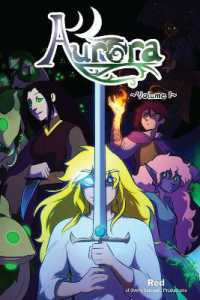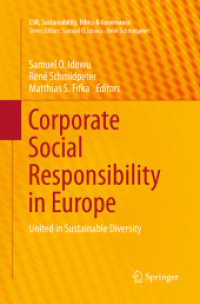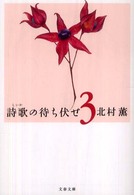Full Description
When Meriwether Lewis and William Clark led the Corps of Discovery on their epic journey across the American West, they were acting not only as territorial explorers but also as diplomatic emissaries from Jefferson's U, S. government to the Indian peoples they encountered. This fresh examination of the rare and beautiful Native American objects related to the Corps' expedition brilliantly challenges the conventional wisdom about Lewis and Clark and places their journey in the context of a complex process of mutual discovery between representatives of very different cultures. In Arts of Diplomacy, anthropologist Castle McLaughlin demonstratesthat Native Americans were active participants in these historic encounters. Selecting objects of significance to bestow as gifts or use in trade, they skillfully negotiated their own strategic interests in their dealings with the exploring party. McLaughlin and her team of researchers tell a story of Native peoples who were sophisticated traders and cultural brokers already engaged in a global exchange of goods and materials decades before the captains' arrival on the scene.
The vehicle for this analysis is the extraordinary collection of late-eighteenth- and early-nineteenth-century Native American objects from the Prairie, Plains, and Pacific Northwest that is housed at the Peabody Museum of Archaeology and Ethnology at Harvard University. Long thought to represent the only remaining ethnographic items acquired by Lewis and Clark, some of the pieces are shown to belong to a newly identified collection of early Native American materials that was assembled in the 1820s by Lt. George C. Hutter, Clark's nephew by marriage. Hillel S. Burger's exquisite color photography and contributions by art historian Gaylord Torrence, anthropologist Anne-Marie Victor-Howe, objects conservator T. Rose Holdcraft, Wasco fiber artist Pat Courtney Gold, and Mandan-Hidatsa community activist Mike Cross enrich this ground-breaking analysis.
Contents
List of illustrationsForeword: The Names of the Nations, by James P. RondaPreface, by Rubie WatsonIntroduction: Discovering Lewis and Clark's Indian Collection PART ONE: THE LIFE HISTORY OF A COLLECTION1. The Lewis and Clark Expedition: An American Quest for Commerce and Science--The Fabric of Empire2. Up the Missouri: Patterns of Diplomacy and Exchange--Glass Beads--From Time Immemorial: The Mandan, Hidatsa, and Arikara People, by Mike Cross3. Selections: The Making of a Collection4. Into the Museum: From Gifts to Artifacts PART TWO: THE PEABODY MUSEUM OBJECTS5. From Warriors and Women Traders: Objects Collected by Meriwether Lewis and William Clark--Jo Esther Parshall, Quillwork Artist--The Raven Belt Ornaments of Lewis and Clark, by Gaylord Torrence6. The Army Moves West: The Curious Collection of Lieutenant George C. Hutter--Missouri Melodies: Flute Player Keith Bear7. Enigmatic Icons: Objects Probably Collected by Lewis and Clark or by Lieutenant Hutter--Butch Thunder Hawk, Painter8. The Language of Pipes --Identifying Feathers--Identifying Wood--Silk Ribbons9. Grizzly Claws, Garters, and Fashionable Hats: Other Possible Expedition Objects--A Wasco Weaver Meets Her Ancestors through Lewis and Clark, by Pat Courtney Gold Afterword: The Peabody-Monticello Native Arts ProjectNotesReferences CitedAcknowledgmentsContributorsPicture CreditsIndex








